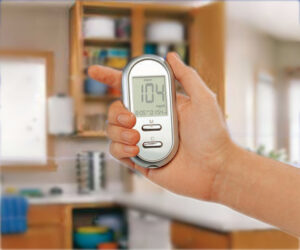 For an individual with either type-1 or type-2 diabetes, the threat of hypoglycemia — commonly known as low blood glucose — is constant. Blood-sugar levels that drop too low present a variety of health risks, and exercise can cause blood-glucose levels to drop in both diabetics and those without diabetes. When exercising, it’s important to understand the relationship between physical activity, food intake and hypoglycemia.
For an individual with either type-1 or type-2 diabetes, the threat of hypoglycemia — commonly known as low blood glucose — is constant. Blood-sugar levels that drop too low present a variety of health risks, and exercise can cause blood-glucose levels to drop in both diabetics and those without diabetes. When exercising, it’s important to understand the relationship between physical activity, food intake and hypoglycemia.
Diabetes and Blood Sugar
Individuals with type-1 and type-2 diabetes, also respectively known as juvenile diabetes and adult onset diabetes, must closely monitor their blood glucose levels. Blood sugar that is too high can cause behavioral changes and result in long-term damage to the body, while low blood sugar can cause immediate danger; if not raised with a fast-acting glucose, such as fruit juice, low blood sugar may cause a seizure or coma. Diabetics need to take care when exercising, as physical activity can lead to a rapid decline in blood-glucose levels.
Eating and Exercise
When exercising, your body burns the fuel you’ve taken in from food, especially the carbohydrates that have been converted into blood glucose. When exercising, it’s important to ensure you’ve provided your body with enough fuel to accommodate the level of exercise you’ll be doing to prevent blood sugar from dropping to a dangerously low level . For this reason, if you haven’t had a hearty, well-balanced meal before an intense workout, it’s necessary to have a carbohydrate-rich snack that will provide you with enough energy to carry you through your work out.
Hypoglycemia
Hypoglycemia takes place when your blood glucose drops lower than normal. Eventhough this typically occurs in a diabetic who has administered too much insulin in relation to the amount of carbohydrates ingested, this can also occur in those who don’t have diabetes and exercise on an empty stomach. Among the symptoms of hypoglycemia are headache, excessive perspiration, elevated heart rate, blurred vision, shakiness, mental confusion and irritability. When blood glucose levels drop to dangerously low levels, symptoms can include slurred speech, seizures, fatigue and, eventually, coma. Because early symptoms such as sweating and a faster heart rate can also be attributed to exercise, the easiest way to prevent hypoglycemia is to eat a healthy meal or snack before exercising.
Carbohydrates
Remember, it’s possible that eating carbohydrates immediately before exercising may lead to a condition known as rebound hypoglycemia. AKA the Somogyi Effect, rebound hypoglycemia occurs when your blood glucose drops rapidly and becomes low enough to cause your body to release a hormone called glucagon, which raises blood sugar. This sudden rise in blood sugar will usually result in the activation of stress hormones that will keep blood-glucose levels elevated for a sustained period of time, often accompanied by symptoms that are similar to those of hypoglycemia. The advice to avoid eating carbohydrates between 30 and 60 minutes before exercising are “unfounded.” But, researchers concluded that exercisers may experience symptoms similar to those of hypoglycemia, but these are usually not linked to low blood glucose levels or exercise performance. Rather, reduced exercise performance due to eating carbohydrates right before a workout is “minimal,” and may even improve performance.

